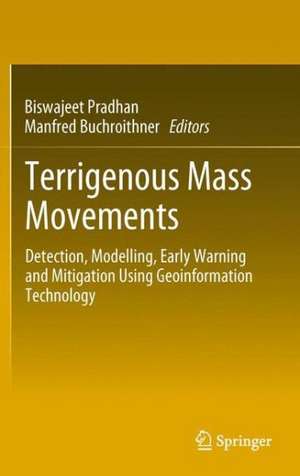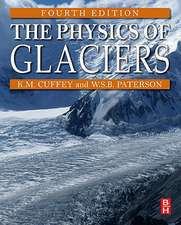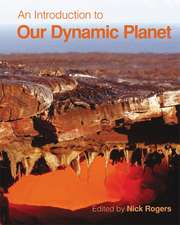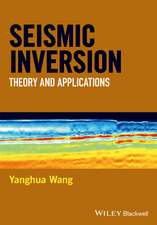Terrigenous Mass Movements: Detection, Modelling, Early Warning and Mitigation Using Geoinformation Technology
Editat de Biswajeet Pradhan, Manfred Buchroithneren Limba Engleză Paperback – 9 mai 2014
The book is a product of a cooperation between the editors and several contributing authors, addressing current issues and recent developments in GI technology and mass movements research. Its fundamental treatment of this technology includes data modeling, topography, geology, geomorphology, remote sensing, artificial neural networks, binomial regression, fuzzy logic, spatial statistics and analysis, and scientific visualization. Both theoretical and practical issues are addressed.
| Toate formatele și edițiile | Preț | Express |
|---|---|---|
| Paperback (1) | 645.79 lei 43-57 zile | |
| Springer Berlin, Heidelberg – 9 mai 2014 | 645.79 lei 43-57 zile | |
| Hardback (1) | 650.69 lei 43-57 zile | |
| Springer Berlin, Heidelberg – 5 apr 2012 | 650.69 lei 43-57 zile |
Preț: 645.79 lei
Preț vechi: 759.76 lei
-15% Nou
Puncte Express: 969
Preț estimativ în valută:
123.61€ • 134.31$ • 103.90£
123.61€ • 134.31$ • 103.90£
Carte tipărită la comandă
Livrare economică 21 aprilie-05 mai
Preluare comenzi: 021 569.72.76
Specificații
ISBN-13: 9783642427787
ISBN-10: 3642427782
Pagini: 408
Ilustrații: VIII, 400 p.
Dimensiuni: 155 x 235 x 21 mm
Greutate: 0.57 kg
Ediția:2012
Editura: Springer Berlin, Heidelberg
Colecția Springer
Locul publicării:Berlin, Heidelberg, Germany
ISBN-10: 3642427782
Pagini: 408
Ilustrații: VIII, 400 p.
Dimensiuni: 155 x 235 x 21 mm
Greutate: 0.57 kg
Ediția:2012
Editura: Springer Berlin, Heidelberg
Colecția Springer
Locul publicării:Berlin, Heidelberg, Germany
Public țintă
ResearchCuprins
Introduction.- Terrestrial Mass Movements.- GITechnology and mass movements: Overview and current research trends.- Morphological attributes and geomorphometry in mass movement.- Remote Sensing tools and technology for studying mass movement inventory.- Modeling approaches using geostatistics and spatial analysis.- Fuzzy Logic and Neural network modeling in hazard and risk assessment.- Geotechnical and Safety factor analysis in mass movement studies.- Mass movements monitoring and characterization using high-resolution DEMs derived by LIDAR and other techniques.- Risk assessment and strategy.- Landslide mapping: Cartography and Visualization.- Landslide studies in snow and glacial areas.
.
.
Textul de pe ultima copertă
Terrestrial mass movements (i.e. cliff collapses, soil creeps, mudflows, landslides etc.) are severe forms of natural disasters mostly occurring in mountainous terrain, which is subjected to specific geological, geomorphological and climatological conditions, as well as to human activities. It is a challenging task to accurately define the position, type and activity of mass movements for the purpose of creating inventory records and potential vulnerability maps. Remote sensing techniques, in combination with Geographic Information System tools, allow state-of-the-art investigation of the degree of potential mass movements and modeling surface processes for hazard and risk mapping. Similarly, through statistical prediction models, future mass-movement-prone areas can be identified and damages can to a certain extent be minimized. Issues of scale and selection of morphological attributes for the scientific analysis of mass movements call for new developments in data modeling and spatio-temporal GIS analysis.
The book is a product of a cooperation between the editors and several contributing authors, addressing current issues and recent developments in GI technology and mass movements research. Its fundamental treatment of this technology includes data modeling, topography, geology, geomorphology, remote sensing, artificial neural networks, binomial regression, fuzzy logic, spatial statistics and analysis, and scientific visualization. Both theoretical and practical issues are addressed.
The book is a product of a cooperation between the editors and several contributing authors, addressing current issues and recent developments in GI technology and mass movements research. Its fundamental treatment of this technology includes data modeling, topography, geology, geomorphology, remote sensing, artificial neural networks, binomial regression, fuzzy logic, spatial statistics and analysis, and scientific visualization. Both theoretical and practical issues are addressed.
Caracteristici
Recent developments and current issues in GITechnology and mass movements Fundamental treatment of GITechnology including data modeling, topography, geology, geomorphology, remote sensing, artificial neural networks, binomial regression, fuzzy logic, spatial statistics and analysis Written by experts in this field Includes supplementary material: sn.pub/extras













